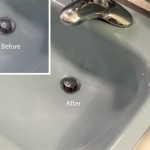Changing Out Kitchen Sink Faucet
Having a functional kitchen sink faucet is essential for everyday tasks such as washing dishes, preparing food, and cleaning. While most kitchen faucets can last for several years with proper maintenance, there may come a time when it needs to be replaced due to leaks, corrosion, or a simple desire for a style update.
Changing out a kitchen sink faucet may seem like a daunting task, but it is a relatively straightforward project that can be completed in a few hours with the right tools and a bit of planning. Here is a detailed guide to help you navigate the process:
Tools and Materials Required:
- New kitchen sink faucet
- Basin wrench
- Adjustable wrench
- Pliers
- Screwdriver
- Plumber's putty
- Teflon tape
- Flashlight (optional, for inspecting hard-to-reach areas)
Step-by-Step Guide:
1. Shut Off Water Supply:
Before starting any work, turn off the water supply lines beneath the sink. Locate the shut-off valves and close them completely. Open the faucet to release any residual water.
2. Disconnect Old Faucet:
Using a basin wrench, loosen the nuts connecting the supply lines to the old faucet. Remove the lines by hand or with pliers. Next, use an adjustable wrench to loosen the mounting nuts that secure the faucet to the sink. Carefully lift the old faucet out of the sink.
3. Clean and Prepare:
Clean the rim of the sink where the new faucet will be installed. Remove any old plumber's putty or debris. Apply a bead of fresh plumber's putty around the base of the new faucet.
4. Mount New Faucet:
Insert the new faucet into the sink hole and align it properly. Tighten the mounting nuts by hand until they are snug. Use the adjustable wrench to further tighten them, but do not overtighten.
5. Connect Supply Lines:
Wrap a few layers of Teflon tape around the threads of the supply lines. Screw the supply lines onto the corresponding connections on the new faucet by hand. Use the basin wrench to tighten them, ensuring that they are secure but not cross-threaded.
6. Turn On Water Supply:
Slowly turn on the water supply valves and check for any leaks. Use the flashlight to inspect hard-to-reach areas if necessary.
7. Adjust and Secure:
Adjust the handles and spout of the new faucet to the desired position. Tighten any screws or nuts if needed to secure all components in place.
Tips:
- If the old faucet is particularly stubborn, use penetrating oil to loosen the nuts.
- For best results, use a faucet designed for the type of sink you have.
- Consider hiring a licensed plumber if you are not comfortable performing plumbing tasks yourself.

How To Replace A Kitchen Sink Faucet

How To Replace A Kitchen Faucet Youtube

How To Replace A Kitchen Faucet

Replacing An Old Kitchen Sink Faucet With A Modern Pull Down Sprayer Youtube

How To Change A Kitchen Faucet Family Handyman

How To Replace A Kitchen Faucet

Replacing A Sink Faucet If I Can Do It So You The Stonybrook House

How To Replace A Kitchen Faucet For Newbies Anika S Diy Life

How To Install A Kitchen Faucet The Home

How To Replace A Kitchen Faucet With Single Handle The Home







